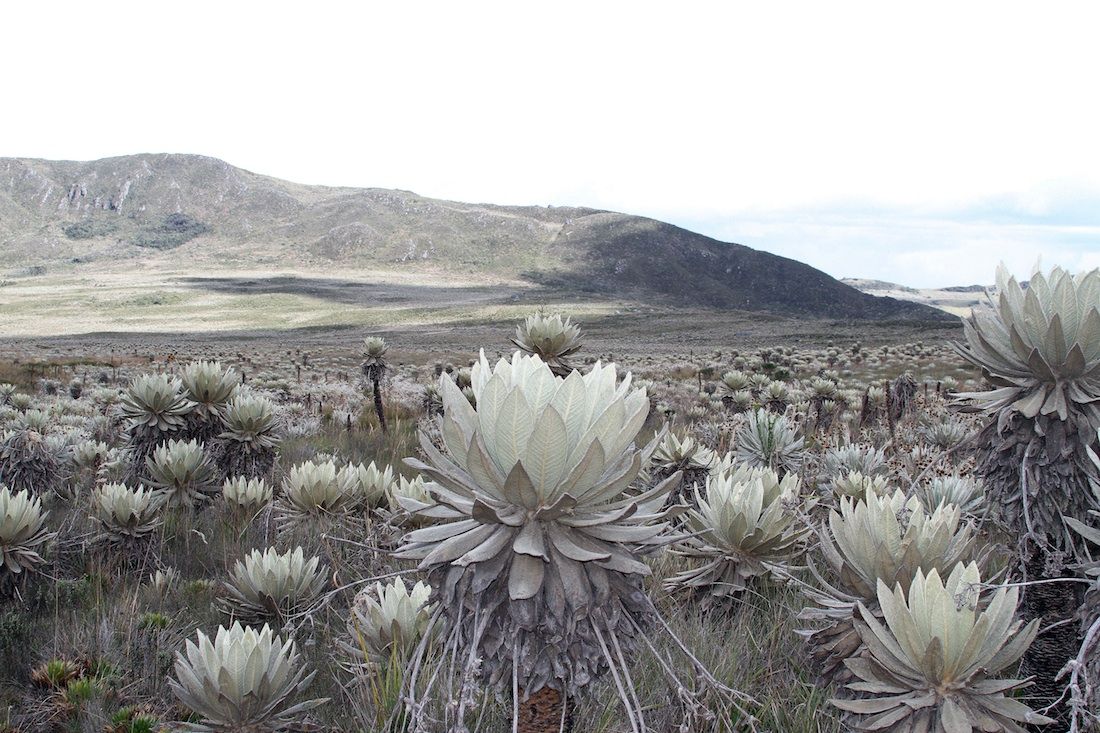We just got back from our first day reporting in the paramo where an odd plant is shaping Colombia's future. At 7 a.m. the geologist Julio Fierro picked us up in Bogota and drove us two hours north to Rabanal. On the way we picked up his buddy, biologist Felipe Rubio.
The plant we were looking for is called the "frailejón" and it grows in a unique sponge-like ecosystem in the Andes Mountains, a high moorland called the paramo. It is this ecosystem that has started to disappear.Like glaciers, the moorlands capture water in the rainy season, making them a natural buffer against floods, and then release it during the dry season, providing drinking water for millions of people in South America's mega-cities. Unlike glaciers, this ecosystem is extremely vulnerable to short-term changes.
In addition to global warming, new interest in Colombian mining and the expansion of high altitude potato crops mean that big companies and poor peasants have started to move in, adding to the stress on these protected areas.
During our reporting we stopped at several mines that look like something straight out of a Dickens novel. Soot was everywhere and fires spring from ovens below ground. After just half an hour the particles were in our hair and all over our clothes. Our throats were dry and we coughed. It was sad to see that just across the street from one of these mines was a school.
The paramos themselves were amazing. They were what you might imagine an ecosystem on Mars would look like. Stretching to the horizon were endless fields of robust, decade-old plants, their leaves covered in thick yellow fur. We were extremely lucky and had good light for shooting most of the day, but when the clouds started rolling in, everything changed quickly. The rain hit hard and we had to run for shelter in the car.
Rubio, the biologist, became emotional when we asked him what this landscape meant to him. He says that there is a direct connection between the paramos and the wellbeing of Colombians. Many come here for recreation, to connect with nature, but more importantly they rely on the water from the area. "If we lose the paramos, we lose our future," he said.



